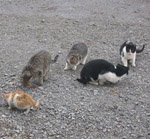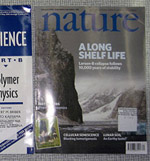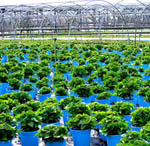Farm conservation programs can save grassland birds from extinction
 Grasshopper sparrow (Ammodramus savannarum). Credit, Dominic Sherony.A new study on the threatened grasshopper sparrow in New Jersey demonstrates that farmland conservation programs can potentially play an important role in reducing the extinction risk of grassland birds.
Grasshopper sparrow (Ammodramus savannarum). Credit, Dominic Sherony.A new study on the threatened grasshopper sparrow in New Jersey demonstrates that farmland conservation programs can potentially play an important role in reducing the extinction risk of grassland birds.
Researchers Alison Seigel and Julie Lockwood projected that a conservation program that paid farmers to delay mowing their hayfields until later in the season could reduce the bird's local extinction risk from near certainty to 10% if it enrolled 50% of the hayfields in the region.
In the United States, farmers can enroll their lands in voluntary programs that provide cash payments in return for conservation-friendly practices.
This includes converting environmentally sensitive crops to hayfields and delaying mowing of the fields to allow grassland birds to breed.
These practices are important because grassland birds have been in decline in North America. Grasslands across the continent have been largely lost to intensive agriculture and development.
Hayfields can provide birds with a substitute for natural grassland habitat while generating agricultural production for the farmer.
In places like New Jersey where hayfields are being lost to rapid urbanization, the conservation of declining grassland birds is not just about protecting farms from development, it also is about managing existing hayfields in a more bird-friendly fashion.
Past research has shown that early mowing of hayfields can actually make the situation of the grasshopper sparrow worse by creating population sinks.
This can happen when young birds move into a hayfield because of the attractive habitat but early mowing reduces the rate of reproduction below the mortality rate.
To look at how farmland conservation programs might affect grassland birds, the researchers used the population viability analysis software, RAMAS GIS to a construct a model of the grasshopper sparrow metapopulation in central New Jersey.
They ran a number of conservation simulations - each with a certain number of parcels and percentage of hayfield area enrolled in a program that paid farmers to delay mowing.
Their model relied on variety of population characteristics - for example survival and reproduction rates in different types of scenarios - some of which they recorded in field surveys and others which they gathered from past research.
The authors concede that more research is needed to confirm some of the assumptions in the model and to better understand how the conservation program affects metapopulations. They write,
"Our next goal is to consider explicitly the spatial configuration of the enrolled hayfields on metapopulation persistence."
While not a subject of this study, future research should also look at the cost effectiveness of the program contemplated in this study compared to alternative conservation approaches.
The program also raises some questions of sustainability in my mind given its voluntary nature and the fact that it would likely require making payments in perpetuity.
--by Rob Goldstein
Seigel, A., & Lockwood, J. (2010). How increasing levels of private land enrollment in conservation agreements affect the population viability of grassland birds Biodiversity and Conservation DOI: 10.1007/s10531-010-9837-6




 Birds
Birds
Reader Comments